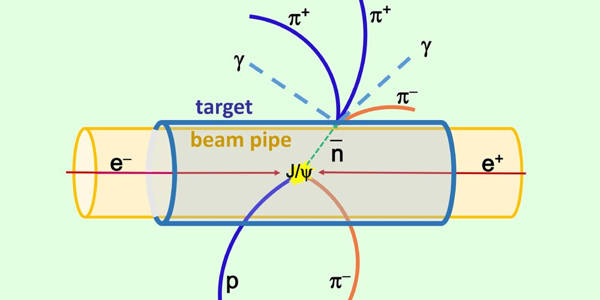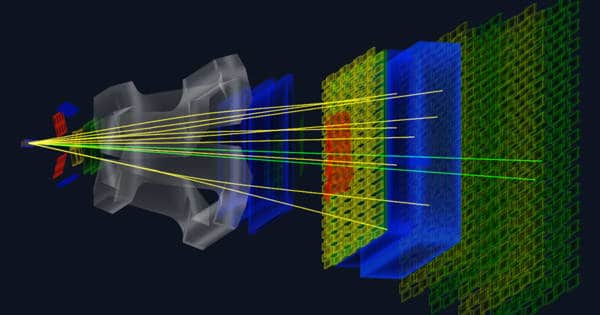Physical Review Letters published a paper based on joint research by Prof. Yuan Changzheng from the Chinese Academy of Sciences’ Institute of High Energy Physics and Prof. Marek Karliner from Tel Aviv University in Israel. It indicates the discovery of a new abundant source of antineutrons and hyperons. These extremely rare subatomic particles are critical for understanding the forces that govern the behavior of matter at the smallest scales, from atomic nuclei to neutron stars.
Physicists study the subatomic world by bombarding their subjects with a hail of tiny subatomic “bullets.” Based on how these ‘bullets’ bounce off their target, a wealth of detailed information about the target’s structure can be deduced. Ernest Rutherford pioneered this method, which he used to discover the atomic nucleus more than a century ago.
It points out a new abundant source of antineutrons and hyperons. These rare subatomic particles are essential for studying forces governing the behavior of matter at the smallest distances, from atomic nuclei to neutron stars.
Different types of subatomic ‘bullets’ probe different aspects of the target, just as X-rays, MRIs, and PET scanners reveal different essential features of a body part in medical imaging. Certain important aspects of the force that holds atomic nuclei together can only be studied by shooting particles known as antineutrons and hyperons, which are currently extremely difficult to produce and control.
According to the paper, these normally rare particles can be produced in large quantities and easily launched as a spinoff of a future “super J/y factory.” This is a facility proposed for the detailed study of specific types of subatomic particles with a property known as ‘hidden charm,’ the discovery of which earned a Nobel Prize in physics. This opens up new avenues for research in particle and nuclear physics, as well as astrophysics and medical physics.

Traditional setups must produce many different types of beams for various dedicated experiments while sharing accelerator time. This necessitates significant resources in terms of manpower and funding, thereby impeding such experiments. In contrast, the approach proposed in this new study will enable experiments with multiple beams at the same time, with no additional infrastructure and minimal additional investment.
According to their calculations, new particles could have two possible outcomes. They propose that the Kaon could decay into a pion (a subatomic particle with a mass about 270 times that of an electron) and some sort of invisible particle in one scenario. Alternatively, the researchers in the KOTO experiment may have witnessed the creation and decay of something completely unknown to physicists.
Researchers in Japan are performing a special data run to determine whether previous observations were true detections of new particles or simply noise. “It’s very exciting if it’s confirmed because it’s completely unexpected,” Tobioka said. “It could be noise, but it could also be something else. Because the expectation of noise is so low in this case, even a single event or observation stands out. And there were four in this case.”
Teppei Kitahara and Yotam Soreg from the Israel Institute of Technology, as well as Gilad Perez from the Weizmann Institute of Science in Israel, were co-authors on this study with Okui and Tobioka.














